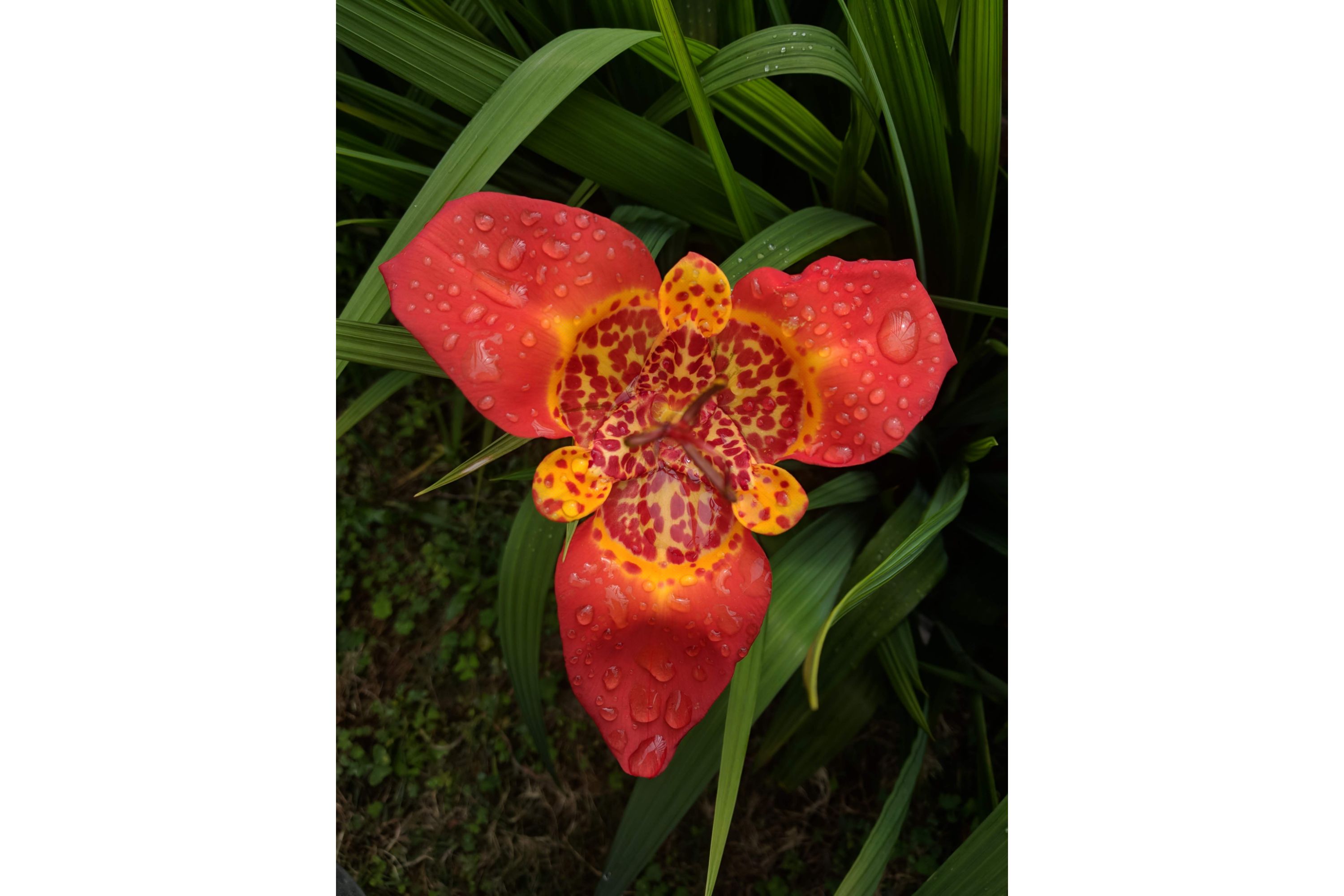Tiger flower
(Tigridia pavonia)

Description
Tigridia pavonia, commonly known as Mexican shell flower or tiger flower, is a popular bulbous plant native to Mexico and Central America. It belongs to the family Iridaceae and is a close relative of gladiolus and crocus. The plant is widely cultivated for its showy, colorful flowers, which resemble the patterns of a tiger's coat. In this article, we will delve into the world of Tigridia pavonia and explore everything you need to know about this beautiful plant, including its characteristics, cultivation, and care requirements. Description: Tigridia pavonia is a herbaceous perennial that grows from a bulb. The plant typically reaches a height of 1 to 2 feet and produces numerous flowers in the summer. Each flower lasts only a day, but the plant produces many flowers over an extended period. The flowers are 3 to 6 inches in diameter and come in a variety of colors, including white, yellow, orange, pink, red, and purple. The flowers of Tigridia pavonia are unique and have a distinctive shape. They have three large petals and three smaller ones that are fused together at the base, forming a cup-shaped structure. The petals are often decorated with dark spots or stripes that resemble a tiger's coat, hence the name "tiger flower." The leaves of the plant are long and sword-shaped, with a deep green color and a smooth texture. Cultivation: Tigridia pavonia is a relatively easy plant to grow, making it a popular choice among gardeners. The plant prefers full sun to partial shade and well-drained soil. It can tolerate a wide range of soil types but prefers a slightly acidic soil with a pH between 6.0 and 7.5. The bulbs of Tigridia pavonia should be planted in the spring after the danger of frost has passed. Plant the bulbs 2 to 3 inches deep and 4 to 6 inches apart. Water the bulbs immediately after planting and keep the soil moist but not waterlogged. Once the plant has started to grow, it should be watered regularly, but care should be taken not to overwater as this can cause the bulbs to rot. Tigridia pavonia can be propagated by dividing the bulbs in the fall or early spring. The bulbs should be dug up and carefully separated into individual bulbs, ensuring that each bulb has at least one shoot or leaf. The bulbs can then be replanted in a new location or stored in a cool, dry place until the next planting season. Care: Tigridia pavonia requires minimal care, but there are a few things to keep in mind to ensure that the plant thrives. The plant should be watered regularly, especially during periods of drought. It is important to avoid overwatering, as this can cause the bulbs to rot. Fertilizer can be applied in the spring and summer, but care should be taken not to over-fertilize, as this can cause the plant to produce more foliage than flowers. The plant can be susceptible to pests such as thrips and spider mites, which can be controlled with insecticidal soap or neem oil. Snails and slugs can also be a problem, and these can be controlled with a slug bait or by handpicking them off the plant. In areas with cold winters, the bulbs of Tigridia pavonia should be lifted and stored in a cool, dry place until the next planting season. In warmer climates, the bulbs can be left in the ground over the winter, but care should be taken to protect the plant from frost and cold temperatures. Uses: Tigridia pavonia is primarily grown as an ornamental plant for its beautiful flowers. The flowers are popular among gardeners and are often used in floral arrangements. In addition, the plant is sometimes used for medicinal purposes in its native regions. In traditional Mexican medicine, the plant is believed to have antipyretic and anti-inflammatory properties and is used to treat fever, headaches, and menstrual cramps. The bulbs are also used in some traditional remedies for skin conditions such as rashes and acne. However, it is important to note that the medicinal properties of Tigridia pavonia have not been extensively studied, and its use for medicinal purposes should only be done under the guidance of a trained healthcare practitioner.
Taxonomic tree:







